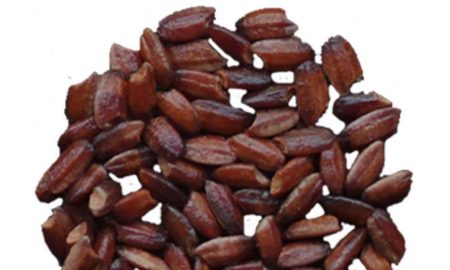June 27, 2017 – The “Color Purple” is more than a Steven Spielberg movie. It is the tint of a new genetically engineered variety of rice developed by Chinese researchers that may end up reducing the risk of some cancers, diabetes, cardiovascular disease, and other chronic illnesses.
The research appears in the June 27th edition of the journal Molecular Plant. It has implications for engineering similar capabilities in other cereal crops such as corn, wheat, and barley.
Cereal crops are proving to be ideal for genetic engineering state the scientists in their paper. Rice is particularly important because it is universally consumed.
The researchers concentrated on adding anthocyanins which are found in some rice varieties but not in the majority of rice consumed by humans. Anthocyanins are flavonoids most often found in berries, green and black teas. Blueberries are a classic example of a purple fruit rich in anthocyanins. Some nuts and some grains contain them as well. And flavonoids are known to interact with other chemicals in our body in very positive ways.
In producing purple rice the researchers identified those genes responsible for anthocyanin and pinpointed where they were deficient in polished white rice consumed around the world. They then developed a strategy for introducing anthocyanin-related genes into the rice. The end result was a rice, purple in colour (see image below) and containing high levels of anthocyanin and other antioxidants.
The method used to create purple rice is called a transgene stacking vector system. Scientists believe it can be replicated to produce many other important additional traits for rice to help in dealing with other medical challenges. They also hope to engineer similar biosynthesized anthocyanins in other cereal crops.
But before we all start gobbling up purple rice it needs to go through the rigorous testing associated with introducing any genetically modified crop.
The research was funded by China’s National Natural Science Foundation, the Ministry of Agriculture, and a Guangdong Province fund set up to support scientific advancements.
















